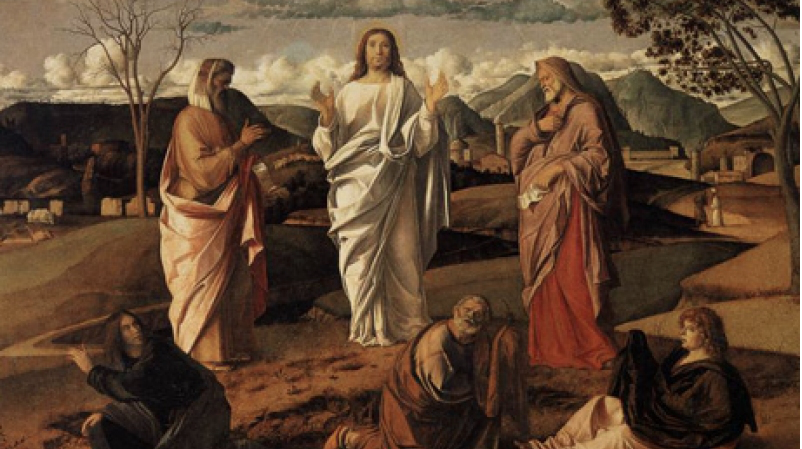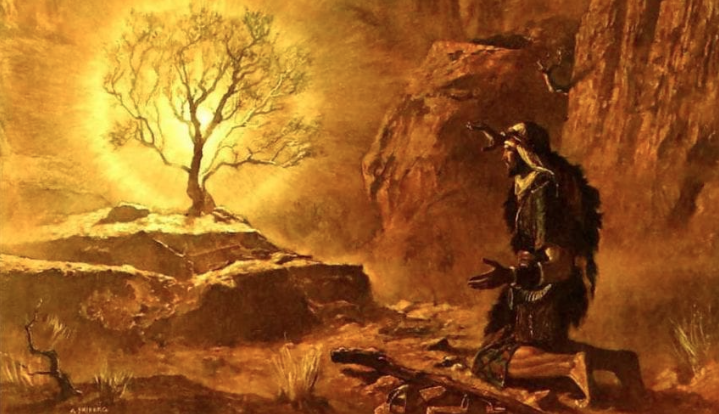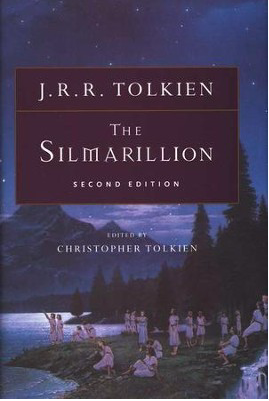
J.R.R. Tolkien created a parallel universe. It reimagines the Biblical story of Creation, but with the same tragedy of the Fall, including the fall of the angels, the fall of man, and the epistemological struggle of good and evil.
The Silmarillion is a deeply Christian cosmology, albeit an imaginary one. It explains the mythic truths of Christianity without ever mentioning them explicitly. The same is true, of course, of The Lord of the Rings. The Silmarillion is the pre-history of The Lord of the Rings. It is Middle Earth’s Book of Genesis, and the Old Testament. The Silmarillion is the Old and the Lord of the Rings is the New, but much like the Hebrew Bible and the Gospel, they are intimately connected. One necessarily leads to the next.
The Silmarillion begins with the beatific vision of Eru, who is called Iluvatar – a type of God the Father. He establishes the original order and harmony of the Tolkien universe. The harmony is created together in Great Music of life. Iluvatar created the Ainur, the Holy Ones, who were the offspring of Iluvatar’s thought and sang music before him. These were a type of the angels that reflect the glory of God, and also the heavenly saints of men to come.
Yet, among the Ainur was Melkor, who had the greatest gifts of power and knowledge. He sought to bring into being things of his own. The discord of Melkor spread over the spread of the harmonious melodies before Iluvatar. The melodies ceased, and Iluvatar pronounced judgment upon Melkor:
“And thou, Melkor, shalt see that no theme may be played that hath not its uttermost source in me, nor can any alter the music in my despite.”
And, Iluvatar revealed all things that were in store for future ages of the world to come.
“And they saw with amazement the coming of the Children of Iluvatar, and the habitation that was prepared for them; and they perceived that they themselves in the labor of their music had been busy with the preparation of this dwelling, and yet knew not that it had any purpose beyond its own beauty. For the Children of Iluvatar were conceived by him alone.”
And, Iluvatar made the world, a new thing, called Ea – this, the habitation of the world, the Elves called Arda, that is, the Earth. This is the primordial past of Earth, and of men, the preternatural Eden. But, Melkor, the fallen Lucifer figure, the Middle Earth Satan, sought to dominate the world.
“When therefore Earth was yet young and full of flame Melkor coveted it, and he said to the other Valar: ‘This shall be my own kingdom.'” The envy of Melkor led to the battles of Middle Earth, first against the Elves, and later, men too.
Yet, “slowly nonetheless the Earth was fashioned and made firm. And thus was the habitation of the Children of Iluvatar established at the last in Deeps of Time and amidst innumerable stars.”
Melkor, the name Elves dare not speak, they called Morgoth. From Morgoth came all foul and fell things upon the Earth, including the Balrogs, the demon of terrors. The greatest of Morgoth’s servants was a spirit called Sauron, who “after years he rose like a shadow of Morgoth, and a ghost of his malice, and walked behind him on the same ruinous path down into the Void.”
This set the stage for the struggle and wars for Middle Earth in this first age at the beginning of days.
This is reminiscent of the Fall of Man in Eden and being cast out of the Garden after Original Sin. Satan the tempter tricked Adam and Eve into disobeyed God, and sin entered the world. Death and destruction followed soon after. So, it is in the world of Tolkien’s Middle Earth.
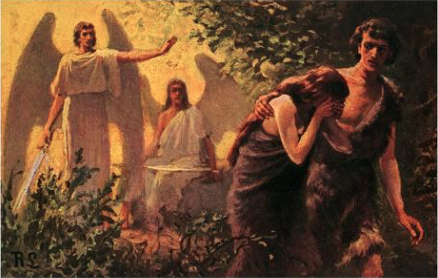
Early in the first age of the world, the Ring of Doom is forged. So too, are the Silmarils, which are the three ancient gems that contain the light of the Trees of Valinor, and the most precious things of the Eldar, forged by Feanor, of the original Children of Iluvatar.
Of course, Melkor lusted for the Simarils, “the very memory of their radiance was a gnawing fire in his heart.” The fallen Elves sent to Middle Earth seek to retain the fire of the radiance of the Edenic home in the West.
The dwarves dwell in Khazad-dum in the latter times called Moria, beyond the Misty Mountains. Moria is, also, Tolkiens inserting the truths and even names of Scripture into his grand tale, as Christ was crucified on Mount Moriah in Jerusalem.
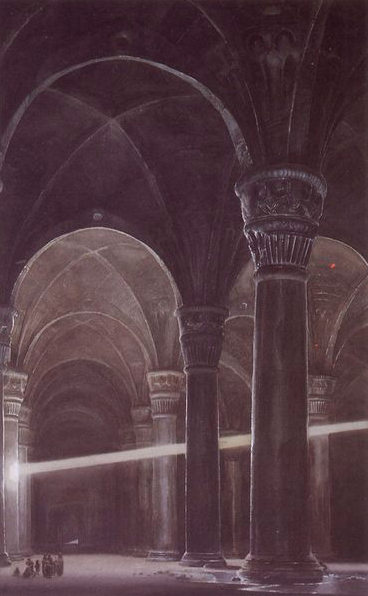
Tolkien also introduces “new tidings” to Middle Earth with the arrival of Feanor and Men to Middle Earth. The new tidings are also reminiscent of Scripture, in the words of the prophet Isaiah:
“Get you up to a high mountain,
O Zion, herald of good tidings;
lift up your voice with strength,
O Jerusalem, herald of good tidings,
lift it up, fear not;
say to the cities of Judah,
“Behold your God!”
Behold, the Lord God comes with might,
and his arm rules for him;
behold, his reward is with him,
and his recompense before him.
He will feed his flock like a shepherd,
he will gather the lambs in his arms,
he will carry them in his bosom,
and gently lead those that are with young.”
(Isaiah 40:9-11)
Elrond and Galadriel, part of the original Eldar of the Elves were there, and the race of Eagles, who were sent forth “to dwell in the crags of the North, and to keep watch upon Morgoth.” Galadriel is a type of the Virgin Mary helping guide and protect Middle Earth from the enmity of Morgoth and Sauron and the forces of evil.
Lembas is another type. It is the Elven waybread, “a wafer of white wax shaped as a single flower of Telperion.” It was holy to the Eldar, “for the Eldar had never before allowed Men to use this waybread, and seldom did so again.” Lembas helped them through their journey, “and he took also the lembas of Melian to strengthen them in the wild.” It was their manna from Heaven, as the Israelites on their journey and Exodus through the desert wilderness wandering of forty years, and as King David wrote in the psalms, “Man ate the bread of Angels.” (Psalm 77:25) And so, now too, in the new and greater dispensation, man again eats the bread of angels, or in our case, Catholics consume the Body and Blood, and Soul and Divinity of our Lord Jesus Christ in the most Holy Eucharist.
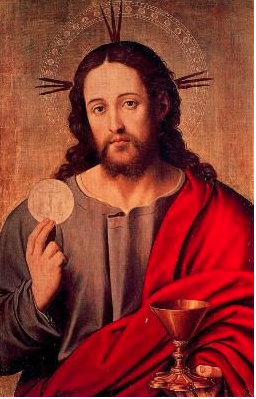
Elves, and even Men, set sail on ships to the West, into the eternity of their immortal shores: “gazing from afar upon the light of the Silmaril, and it was very great. Then Earendil, first of living Men, landed on the immortal shores.” “In those days there was a great building of ships upon the shores of the Western Sea; and thence in many a fleet the Eldar set sail into the West, and came never back to the lands of the weeping and of war.” Those who take the shores to the immortal shores of the West break the circular cycles of life and death, and arrive, alas, into the peace of eternity.
Men fell quickly under the power and sway of Morgoth, or that is, Satan. “It is said by the Eldar that Men came into the world in the time of the Shadow of Morgoth, and they fell swiftly under his dominion.”
It is under this dark dominion that Sauron wielded the One Ring of power and of doom. In that, Saruon the Deceiver forged Nine Rings to ensnare the kings of Men. These became the Ring Wraiths, the Nazgul haunting Middle Earth in service to Sauron and the One Ring.
And Melkor and Sauron set up a new religion to worship the Darkness. Yet, there remained “a remnant of the Faithful,” who refused to bow down to the Darkness. Leading the remnant of the Faithful was the King of Numenor, and his sons including Isildur.
“The days are dark, and there is no hope for Men, for the Faithful are few.” Such was the situation that Men found themselves in the darkness of Middle Earth under Morgoth and Sauron. It was in these dark times that the spirit of Sauron took on a new form:
“There he took up again his great Ring in Barad-dur, and dwelt there, dark and silent, until he wrought himself a new guise, an image of malice and hatred made visible; and the Eye of Sauron the Terrible few could endure.” Sauron forged the One Ring of Power in the Mountain of Fire in the Land of Shadow. And, Sauron destroyed the land of Men in Numenor and burned the White Tree.
Yet, the exiles of Numenor established themselves in the realm of Gondor, and Sauron prepared himself for a great war against the Eldar and Men of the West. By way of necessity, there was established a great alliance between Elves and Men.
During the last siege “Sauron himself came forth; and he wrestled with Gil-galad and Elendil, and they both were slain, and the sword of Elendil broke under him as he fell. But Sauron also was thrown down, and with the hilt-shard of Narsil Isildur cut the Ruling Ring from the hand of Sauron and took it for his own. Then Sauron was for that time vanquished, and he forsook his body, and his spirit fled far away and his in waste places; and he took no visible shape again for many long years.”
Yet, the Ring betrayed Isildur and the Ring was lost to history for a time. “For the blood of the Numenoreans became mingled with that of other men, and their power and wisdom diminished, and their life-span was shortened, and the watch upon Mordor slumbered.”
It was in this diminished state that Sauron was allowed to return again in the third age of Men. “But the Dominion of Men was preparing and all things were changing, until at last the Dark Lord arose in Mirkwood again.”
It was in these dire times that the Lords of the West sent messengers – in reality, a type of the prophets of Old – back to Middle Earth to contest the power of Sauron, and “if he should arise again, and to move Elves and Men and all living things of good will to valiant deeds.” Chief among the messengers was Mithrandir, who the Men of the North called Gandalf. And, Elrond prophesied to Gandalf, “Nonetheless I forebode that the One will yet be found, and then war will arise again, and in that war this Age will be ended.”
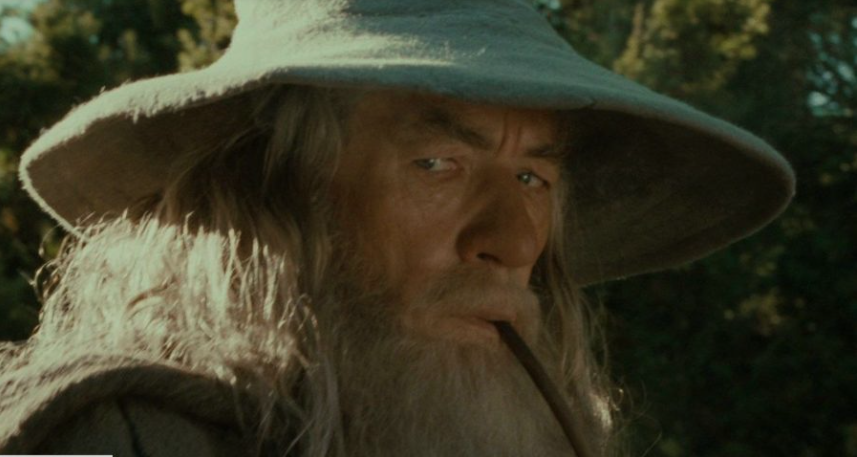
These are the wars and rumors of wars of the Antichrist, and the siege of Christendom and every faithful remnant of Christian.
Yet, in this dark hour, arose the return of the King, the Heir of Isildur, Aragorn, the son of Arathorn, in the line of Elendil, tall in stature, part of the ancient heroes of old of Men, Elf friends to the Eldar.
However, it was the small in stature, a Halfling, Frodo the Hobbit, who would carry the burden of destroying the One Ring of Power. The smallest and humblest of creatures would take the evil ring into the Fires of Mount Doom for its ultimate destruction.
Christ and the Return of the King will ultimately destroy the power of Satan forever casting him back into the pit of fire from whence he came. The humble and the faithful will thence rest forevermore in the Kingdom Come in peaceful bliss.
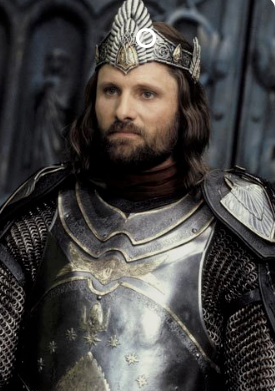
“And God shall wipe away all tears from their eyes: and death shall be no more, nor mourning, nor crying, nor sorrow shall be any more, for the former things are passed away.”
(Revelation 21:4)

